William Fioravanti: The power tailor
*This article is part of a series that looks at the history of New York’s bespoke tailoring. You can see the first, introductory article, here*
By Manish Puri
“Ready-made men’s wear was never more varied. Nevertheless, an increasing number of men prefer to submit to the more tedious, more costly and old-fashioned ritual of having their clothes made to their measure.
Some of them acquire international cachet (real or imagined) by being tailored in London, Rome, Paris or Hong Kong. A smaller number order from London tailors who make semi-annual visits to the former American colonies, whilst a hard-core group of custom devotees patronize New York’s vanishing breed of tailors.”
The above is from the introduction to a New York Times article on custom clothing. As fellow practitioners of this tedious, costly, and old-fashioned ritual, I doubt there’s little here that’s news to you. What might surprise you though is that this article wasn’t written recently, but dates to 1969.
Whilst digging through the archives of newspapers and magazines for this series on New York tailoring, what struck me most was the sense that tailoring has been in a state of permacrisis for over 60 years.
And in this 1969 article, to better understand the shifting trends, the Times met with three members of the “hard-core” tribe to discuss their motivations and tailors of choice: Dunhill Tailors (who we will cover in detail soon), Bernard Weatherill (photographed above by the great Slim Aarons in 1964) and, “the Master”, William Fioravanti.
William Fioravanti (Bill to those who knew him best) was born in 1926 and raised in Brooklyn. His father, a Neapolitan tailor, gifted his son a thimble at the age of nine and, throughout his life, William would use his father’s shears.
In 1946, after serving in the Navy, William apprenticed with Ernest A. De Rose – an Italian-born custom tailor to the likes of the Rockefeller family, who had premises on East 52nd Street.
In 1951, shortly after De Rose’s passing, Fioravanti set up his own business on the fourth floor of 45 West 57th Street.
Customers would take an elevator from street level and push open a heavy wooden door to reveal an “Italianate” space which, according to Alan Flusser’s 1981 book Making the Man, looked like it had been “transplanted from the Via Veneto”, furnished with “antique table and chairs, leather and tooled-gold walls, and Tiffany-style lamps”.
Hovering high above the city sidewalks proved little obstacle to business - in fact William preferred it. “If they gave me a ground floor for nothing, I wouldn’t take it”, he told the New York Times in 2007. “If we were selling a suit for $2,000, we’d want walk-in business. But someone paying what we charge wants exclusivity.”
And any discussion on Fioravanti leads back to that subject: price. Steve Wynn, the developer of numerous Las Vegas hotels including the Golden Nugget and Bellagio, and presumably not a man accustomed to having to check his overdraft limit, once quipped: “You may go to Mr. Fioravanti rich and famous. But you only leave famous.”
With custom prices starting in excess of $3,000 in the nineties and $6,000 in the noughties ($18,000 plus if your tastes and wallet extended to Super 200 or cashmere cloths) it’s little surprise that Fioravanti catered to an elite clientele that Bruce Boyer described to us as comprising “international bankers, CEOs, […] and regular old billionaires”.
William counted Charles Revson, the founder and then President of cosmetics company Revlon, amongst his very best customers. Revson (above and below) would order around a dozen suits a year and thought so highly of William that he invested in his business.
Superficially, Revson’s tailored wardrobe appeared to be the paragon of conservatism – dominated by mohair and flannel suits in banker’s grey, blue and black. When a new executive wore a dark brown suit to the office, Revson railed “you know what brown is the colour of, don’t you?” However, those same suits were lined with vivid and elaborate Hermès scarves purchased by his wife, Lyn.
Fioravanti would also make the white barathea trousers that both Charles and Lyn would wear on their yacht, the Ultima II (above), purchased for $3.5m in 1967 and said to span the length of a city block.
The Fioravanti house style, at that time (1950s to 1960s), was described by William as “very tailored but softly”.
Revson’s trousers (below with model Suzy Parker in 1956) were “slim and cuffless with inverted pleats” while the jackets were “slightly pinched at the waistline with three-flap pockets, 8-inch double side vents, two buttons on the sleeves, and 3¼ inch lapels”.
Fioravanti tried to persuade Revson to let him raise the vents and widen the lapels by a half inch or more. Whilst these efforts were in vain, it was perhaps a hint of the shift towards a silhouette that would go on to define Fioravanti: The Power Look.
The Power Look (or the 57th St Suit) and its defining characterises were expounded by New York bench tailor, Frank Shattuck, in comments on Simon’s piece on New York’s bespoke tailors.
“The 57th St Suit was from a day of big American Cadillacs and Lincoln Continentals. It was for powerful men unapologetic about their position. It was a highly constructed suit for highly constructed men.
Strong, padded shoulders and a rope sleeve. A nipped waist, high side vents and a cupped hem. […] They are well engineered and no one thing grabs the eye. Elegant powerful lines and symmetry.”
Amongst the finest exponents of the Power Look were Henry Stewart, who worked out of 37 W 57th St (above left) and Tony Maurizio who worked out of 18 E 53rd St (above right, in a 50s continental suit).
Henry too was the son of a tailor (on Savile Row), and Tony was William’s Best Man at his wedding. Both men had their own iterations, but it’s widely acknowledged that Fioravanti innovated the look with many of his suits distinguished by a concave pagoda shoulder (below on Fioravanti).
To the modern palette, accustomed to ever softening and unstructured lines, the shoulder might feel unnatural. In fact, the pagoda was considered anything but, shaped, as it is, to trace the natural dip through the clavicle and the rise to the acromion (the bony spur on the edge of the shoulder blade).
It’s a particularly skilled construction which can verge on cartoonish if made by any but the surest of hands - another aspect where Fioravanti’s workroom was nonpareil in New York.
At its peak Fioravanti had over 20 tailors (mostly Italian origin) working in-house at three long canvas-covered tables, each with a specific task or speciality: one man performing alterations, some cutting, others working on coat fronts, and three women employed as finishers. In 1975, the team was making 2,000 garments a year.
It was thanks to this exceptional and plentiful workforce (above, in Roberto Cabrera’s Classic Tailoring Techniques) that a suit could be made in two weeks if necessary – although 12 to 16 was more typical.
It might also have emboldened William’s wife and partner, Olga, in an interview with New York magazine in 2007, to dismiss those custom competitors that outsourced work: “Bespoke is made on the premises, by the same person who took your measurements”.
Fioravanti even had a full-time vestmaker, Carmine Di Fabio, in his ranks – despite the fact that, according to Di Fabio at least, “most men stopped wearing vests when Franklin Roosevelt was President [1933-1945]”. In the experienced hands of Di Fabio, it would take six hours to make a plain vest (slightly longer for double breasted and dress vests).
“Vests serve a practical purpose”, he explained in this 1975 feature in The New Yorker, “They keep you warm in winter, and they’re more refined looking than a sweater. Machine-made vests don’t ever fit right. They have no shape, and they always seem to be too short or too long. I do everything by hand.”
It was this unwavering commitment to handwork that saw William awarded the Forbici D’Oro (Golden Scissors) by the Academy of Master Tailors in Italy. Further honours came from the Custom Tailors and Design Association (CTDA) – a body that he served as President for many years – in the form of a Lifetime Achievement Award in 1998, to accompany a place in their Hall of Fame.
But ultimately, despite everything - the astronomical price tags, the A-list clientele, the accolades - William understood that his suits, and the artistry that went into making his style, were merely an exquisite plinth upon which to display oneself.
As he explained to Cal Fussman (in a terrific 2007 Esquire article The Perfect Suit): "This suit we're making for you, it's not going to give you anything you don't already have inside. But it will open doors so that people can see what you've got."
Manish is @The_Daily_Mirror on Instagram


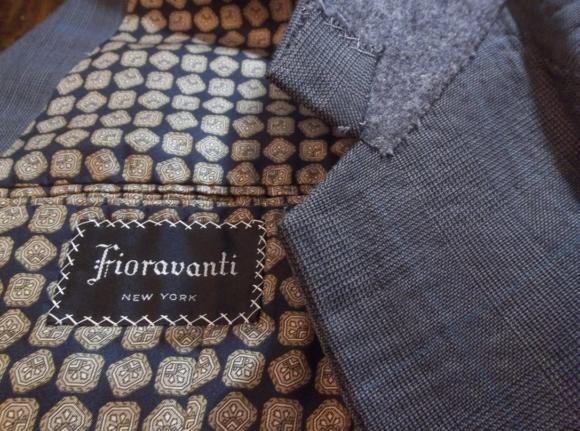
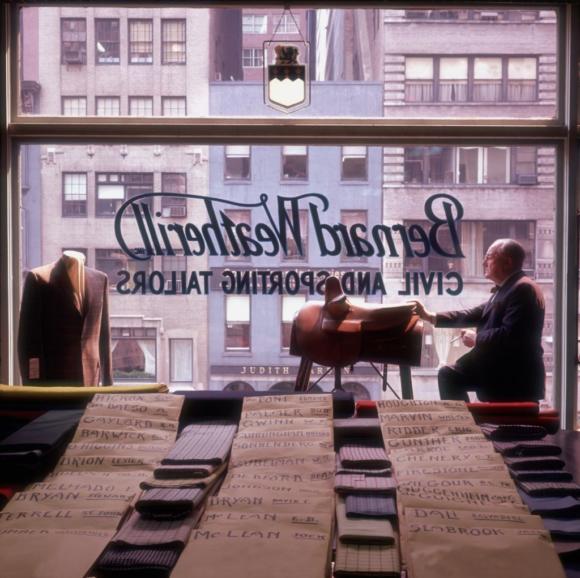
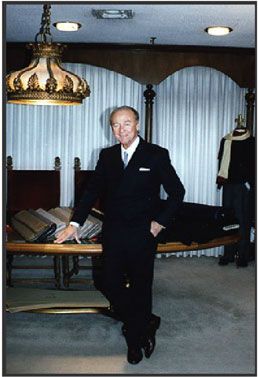
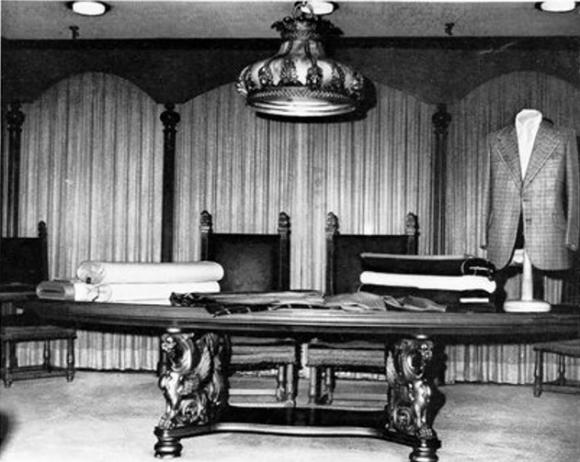
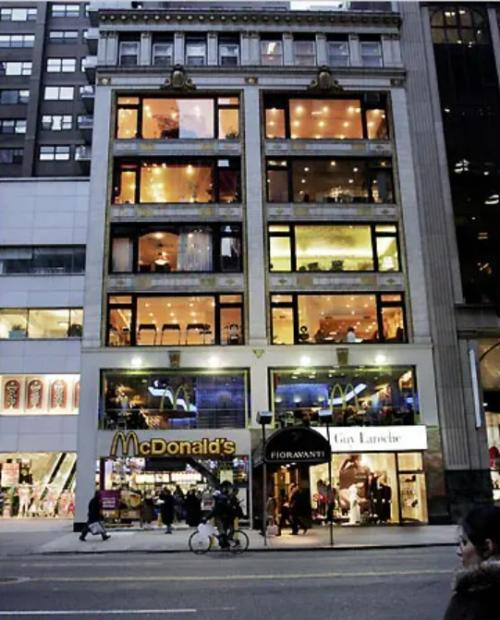
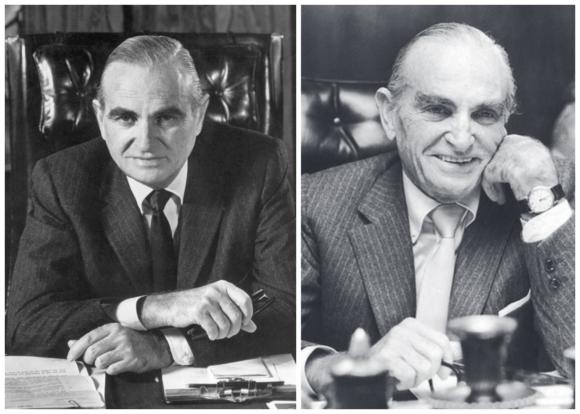
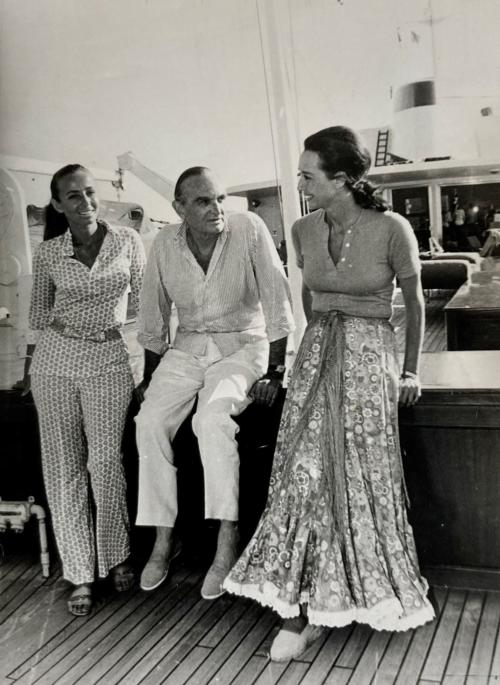
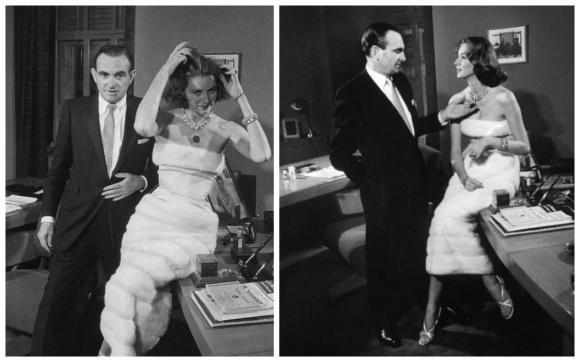
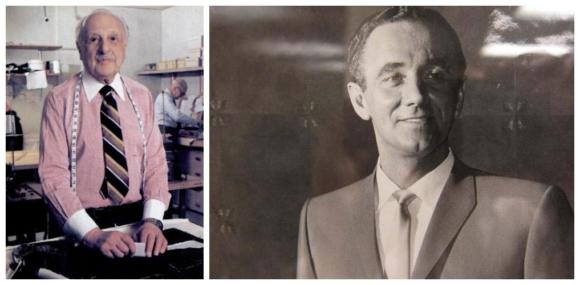
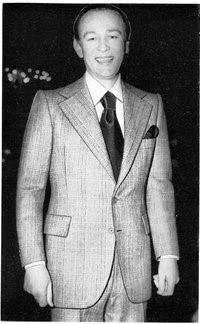
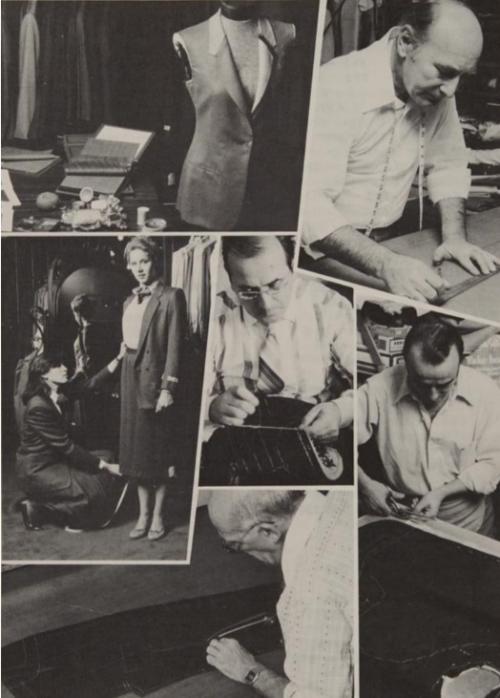
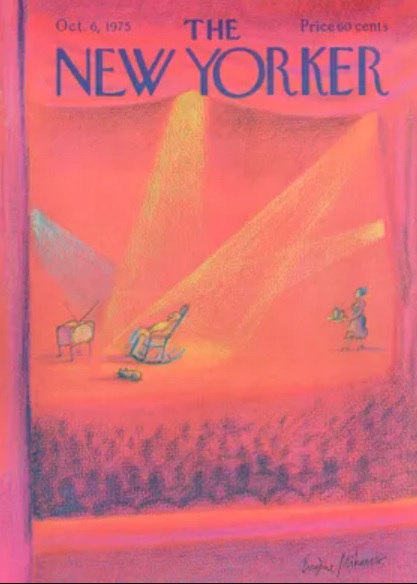
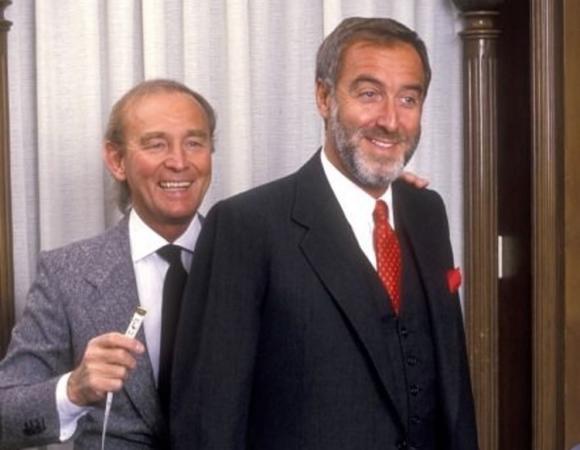


























This is a great series of Articles here!
Could this be the start of something new..you could then do a history London tailors particularly …and Italian and other European and maybe Asian tailors.
Looking forward to the next article!
Thanks Lindsay. No plans for that, just because London tailors are much better covered, and there is little in terms of history for Asian tailors (though see here on the Red Gang). But great to have the suggestion and enthusiasm!
Interesting read, thank you. So in a way the Power Suit was the “NY house style” in those days? Are we going to hear more of Henry Stewart, sounds a bit as if he acquired mythic status? Looking forward to the next article 🙂
Good morning from NY…..this was another good article..gentlemen enjoy your day…peace
Thanks, Manish, for the excellent article.
The gentleman being fitted by Mr. Fioravanti is Barry Slotnick, a celebrated criminal defense attorney. The photo was taken in 1987.
Mr. Slotnick was part of the tradition of courtroom lawyers who dressed impeccably for not only court but each and every day for client meetings at the office, meetings with the press, and social events at night. Some went a little over the top and wore clothes that screamed “custom.”. But the model was the well dressed attorney in an expensive suit. Mr. Slotnick fit that model to a “T”. He was tall and thin and wore dark, conservative three piece suits very well. Some other lawyers who loved to dress well are the late Mel Sachs and Ed Hayes.
In our dress-down culture, there are lawyers and business leaders who trudge around their office in untucked shirts. Some even allow themselves to appear in the media and be photographed in a casual state. This would be unthinkable to the men of the Charles Revson’s generation.
The tradition of dressing is upheld by only a few, such as myself.
Very enjoyable series!! Look forward to the next one
An extremely well written and very accurate article. Bill definitely would have approved.
Thst’s quite a compliment from a top American bespoke tailor!
I was lucky to catch the tail end of the “Old Guard” of American tailors (basically the Northeastern members of the CTDA) when I was coming up. Bill and Joe Centofanti, my mentor, were very close and spoke once every couple of weeks or so. Hearing Centofanti explaining Bill’s “power look” to me as a young tailor was the first time I really understood how much expression could be built into a suit with slight nuances, very inspiring. I spoke with Bill extensively on only one occasion and he gave me some advice that has impacted my whole trajectory as a tailor, draftsman and designer. It was obvious he loved tailoring and was always highly revered in the States and internationally. Thanks for featuring these American stories.
I was just starting my business career and really wanted to try Fioravanti (for the power look) but alas could not afford him at the time. Very interesting article.
Re NY tailors: I commissioned Henry Stewart starting in the early 80’s. Jackets, trousers, overcoat, suits. The fit was beyond wonderful! I felt like a million bucks, the silhouette was striking.
His studio.on 57th St was simple and like like a mens club. Henry was very kind to me, spent time explaining everything. In fact, he insisted I come in to adjust certain things beyond the normal you expect at no additional cost. Frank Shattuck did some training with him.
Had the chance to meet Paul Newman and his wife at Henry’s studio. He made garments for Paul’s up comming movie together with some riding clothes for his wife. He made some things for DiNero in his gangster movie.
The style was very Savile Row, structured, a timeless cut such as you would see on Cary Grant.
W/the exception of the trousers and 1 Jacket, I still have and wear the remaining garments Henry made for me proudly.
Thanks Henry
Wonderful, thank you Guy
No thank you. I would not want to be in the clientele company along with mob lawyer Barry Slotnick (pictured at end) or the diminutive Ronald Perelman, who bought, and trashed Revlon. Or as the legendary Sam Goldwyn would opine, “include me out.” Cheers,
Great to remember one of the icons of the NYC bespoke world – wonderful tailor and wonderful man. Even though I never got a suit from him, he was always generous with his time and thoughtful comments on what I wore. I’m glad there now appears to be a new generation of true tailors taking over in NYC.
Who would one go to now in NYC should one want the 57th Street Look?
Will you be covering Ivy tailors as well in this series? It’ll be interesting to know more about the bespoke operations of Brooks Brothers (which stopped providing the service in ’76), and of smaller operations such as Winston Tailors which, AFAIK, offered true bespoke until Paul Winston wound down the business during the pandemic. I wanted to get a bespoke sack suit done by Paul but, alas, it was too late.
Sack suits often get short shrift and seen as the equivalent of the Ford T-Model but it’d be interesting to see what a bespoke approach brings to it. Maybe compare it even to how Tailor Caid who, for me, carries the bespoke Ivy suit torch almost single-handedly (though I might be wrong–one never knows with Japan).